Best Soil for Indoor Succulents
Succulents are amazing indoor plants. They look cool and don’t need much care. But to keep them happy, you need the right soil. The best soil for indoor succulents is a mix that drains well and has good air flow. This kind of soil helps stop your plants from getting too wet.
You can buy special succulent soil or make your own. A good mix can have regular potting soil, coarse sand, and perlite or pumice. This mix lets water drain fast and gives roots room to breathe. Succulents like soil that’s a bit acidic, with a pH between 6.0 and 7.0.
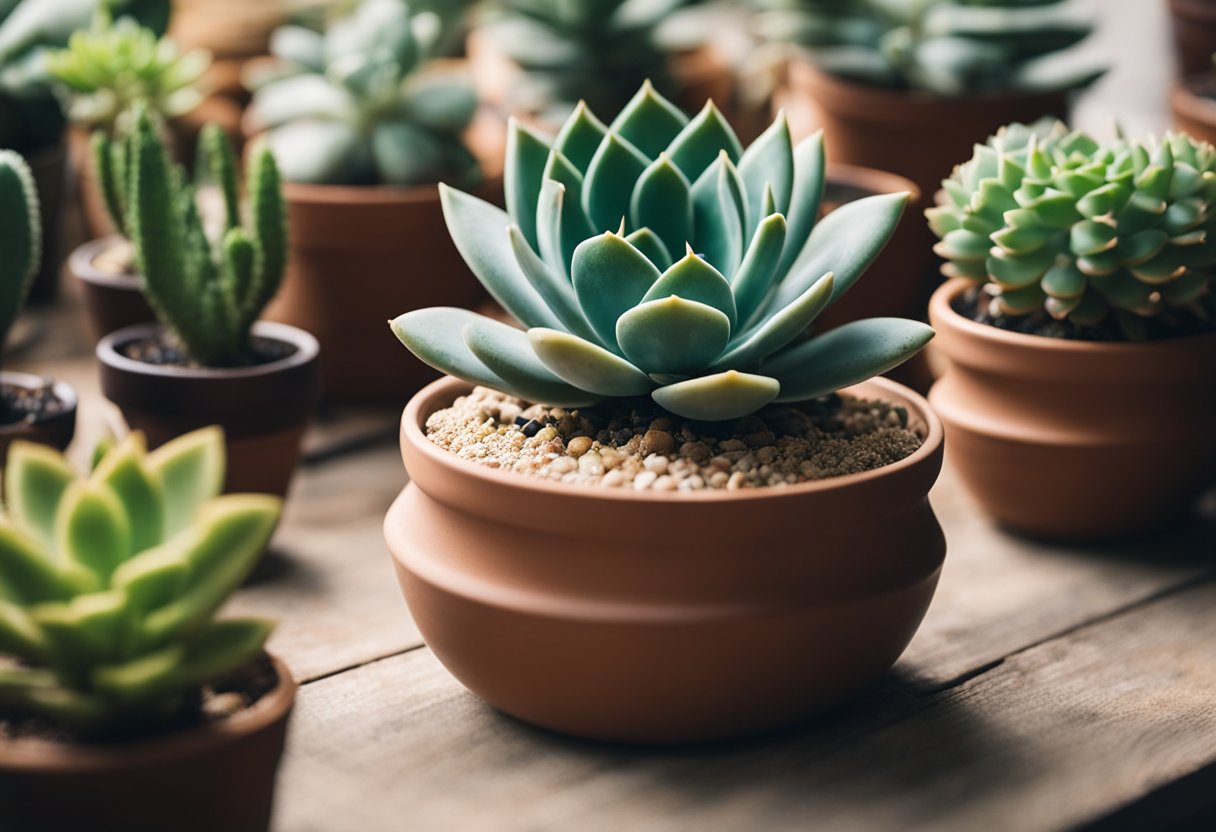
Picking the right soil is key to having healthy succulents indoors. It helps your plants grow strong roots and stay safe from rot. With the right soil, you can enjoy your indoor succulents for a long time.
Key Takeaways
- Use well-draining soil with good air flow for indoor succulents
- Mix regular potting soil with coarse sand and perlite or pumice for the best results
- Water your succulents less often and make sure the soil dries between watering
Understanding Soil Basics for Indoor Succulents
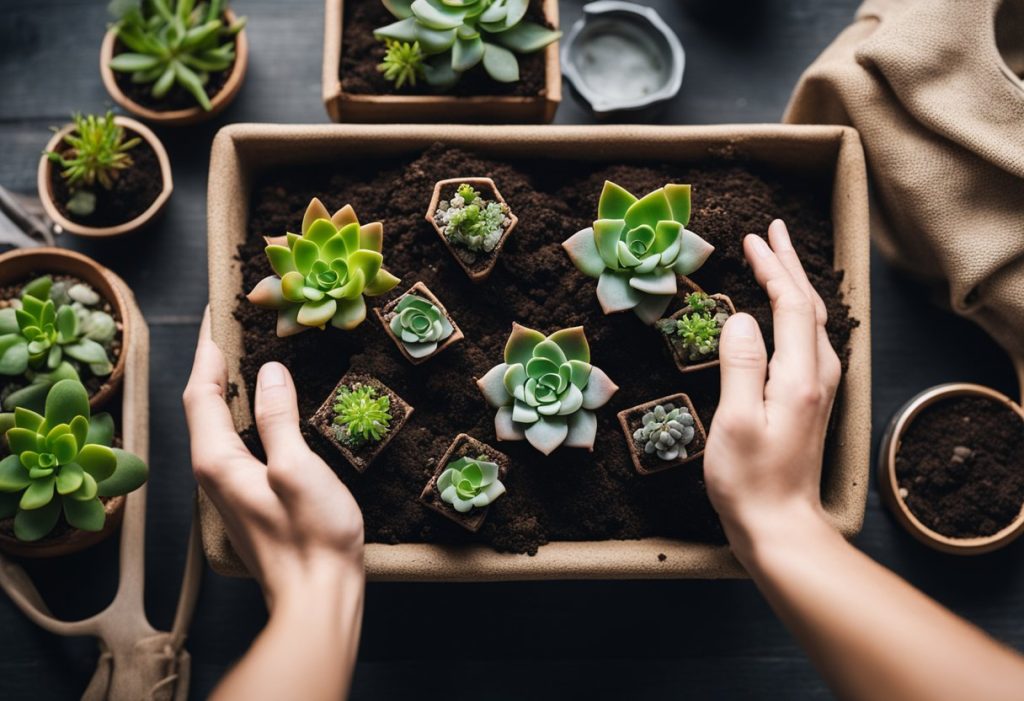
Good soil is key for happy succulents indoors. It helps your plants grow strong roots and stay healthy.
Importance of Drainage
Succulents don’t like wet feet. They need soil that drains fast to avoid root rot. You can test drainage by watering your pot. The water should flow out quickly.
Add perlite or pumice to your mix. These little rocks create air pockets. They help water move through the soil faster.
Soil Composition and Texture
Your succulent soil should be light and airy. A mix of organic and mineral matter works best.
Organic stuff like peat moss or coconut coir helps hold some water. But don’t use too much. Your plants don’t need a lot.
Sand and small rocks are great for succulents. They mimic the plant’s natural home.
Selecting the Right Potting Mix
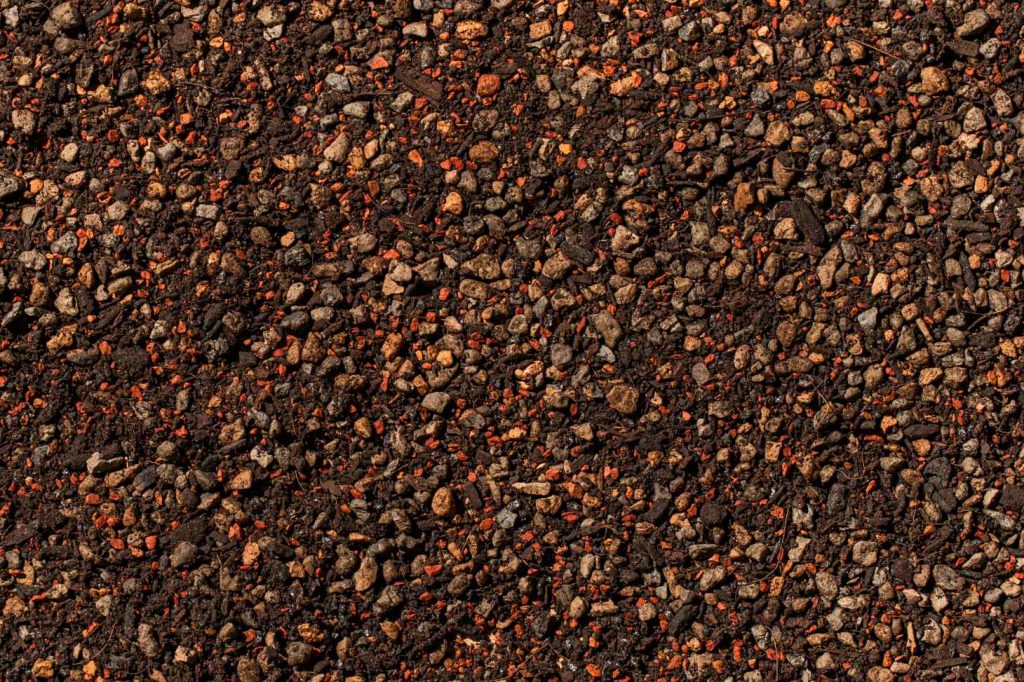
Choosing the best soil for your indoor succulents is key to keeping them happy and healthy. The right mix lets water drain quickly and gives roots room to breathe.
Ready-Made Succulent Soil Mixes
You can find many pre-made succulent soils at garden stores. These mixes are easy to use and save you time. Look for ones labeled for cacti and succulents. However, be aware that while these ready-made soils should have the right mix of ingredients to keep your plants thriving, many commercial cactus and succulent mixes aren’t as well-draining as they need to be.
When picking a mix, feel it with your hands. It should be gritty and loose, not heavy or muddy. Good succulent soil won’t clump up when you squeeze it.
Our special blend is designed for perfect drainage, so your succulents get the right amount of moisture.
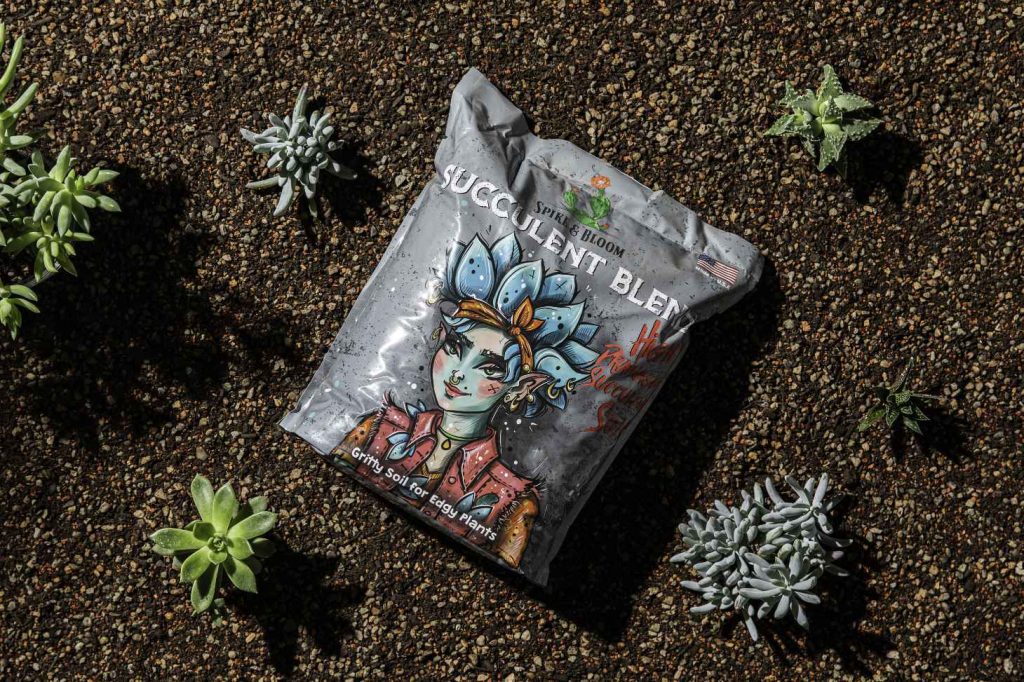
DIY Soil Mix Recipes
Making your own soil lets you control what goes into it. A basic recipe is:
- 3 parts potting soil
- 2 parts coarse sand
- 1 part perlite or pumice
Mix these in a big container. You can tweak the amounts to make it drain faster or slower. Add more course sand for dessert-type succulents. Use more potting soil for jungle-type succulent that like their substrate to be a bit wetter.
Try this mix too:
- 2 parts potting soil
- 1 part coarse sand
- 1 part perlite
While DIY mixes are an option, it can be tricky to get the balance right, and you might end up with leftover ingredients. For a hassle-free and perfectly balanced option, try our succulent blend succulent soil.
Ingredients for Custom Mixes
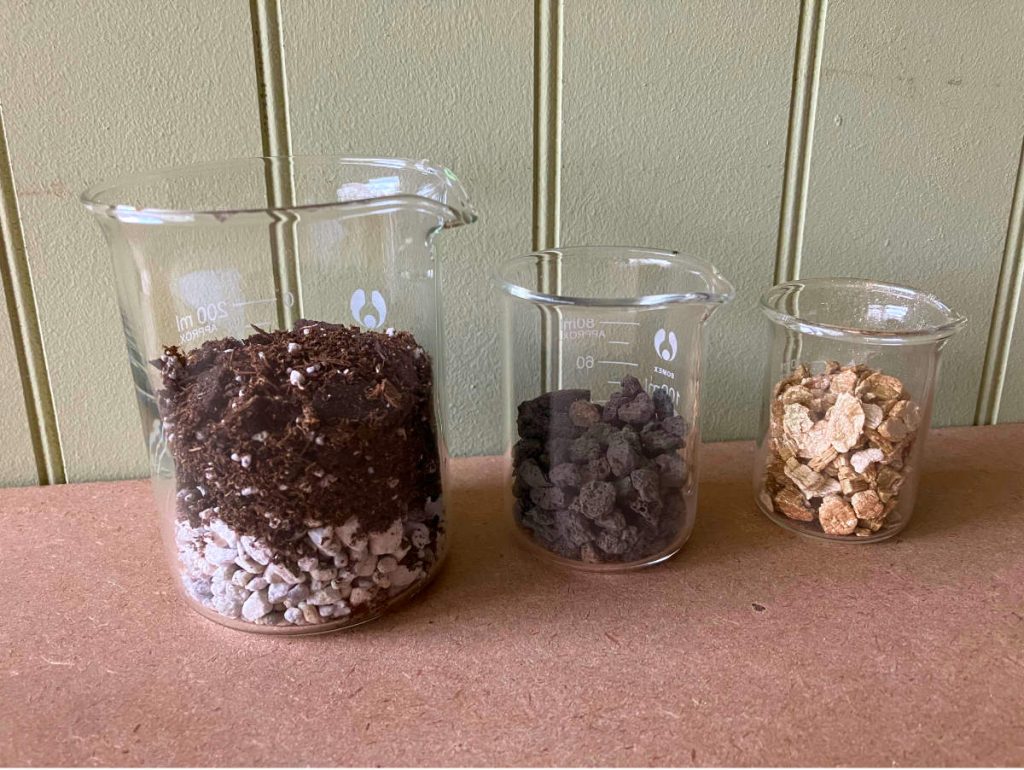
To make your own perfect succulent soil, start with regular potting mix as a base. Then add stuff to make it drain better:
- Perlite or pumice: These light, puffy bits create air pockets.
- Coarse sand: It helps water flow through fast.
- Small pebbles or gravel: They add weight and improve drainage.
You can also toss in some extras:
- Coconut coir: It holds water and lets air through.
- Worm castings: They add nutrients slowly over time.
- Kelp: It gives plants a boost of natural growth hormones.
Mix and match these to make soil that’s just right for your plants and your climate.
Mastering Watering and Fertilization
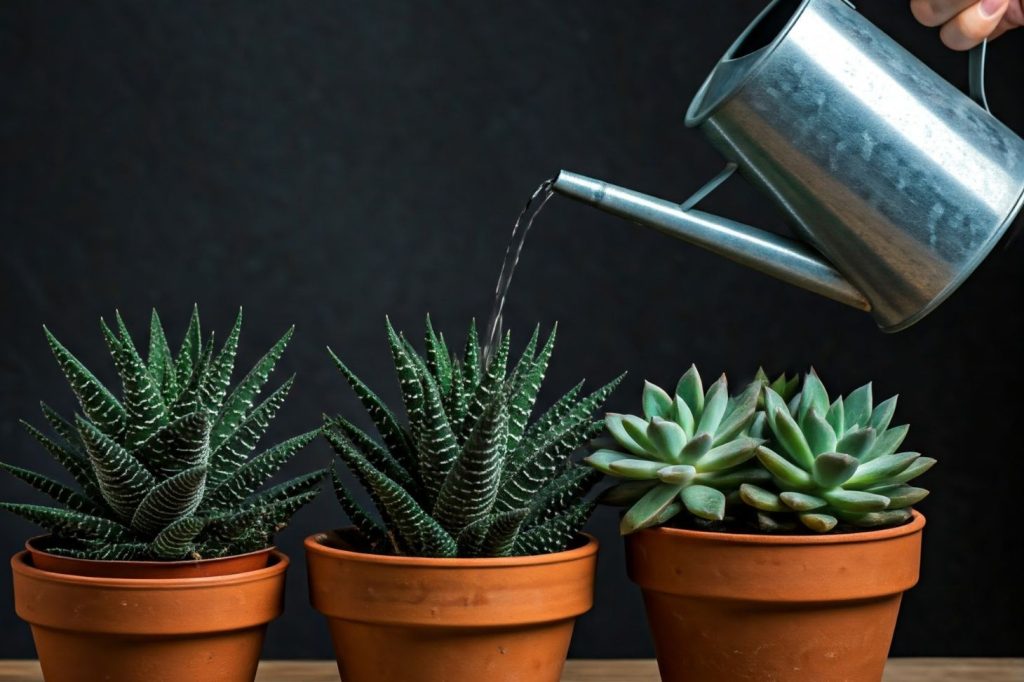
Watering and feeding your indoor succulents can be tricky. With the right know-how, you’ll keep your plants happy and avoid common pitfalls.
Avoiding Overwatering and Root Rot
Succulents hate wet feet. Water your plants only when the soil is completely dry. Stick your finger about an inch into the soil to check.
Use pots with drainage holes. This lets excess water escape and prevents root rot.
Water deeply but infrequently. When you do water, soak the soil until water runs out the bottom. Then let it dry out fully before watering again.
Look for signs of overwatering like yellowing leaves or a mushy stem. If you spot these, cut back on watering right away.
In winter, most succulents need even less water. Some may not need any at all during their dormant period.
Nutrients and Fertilization Needs
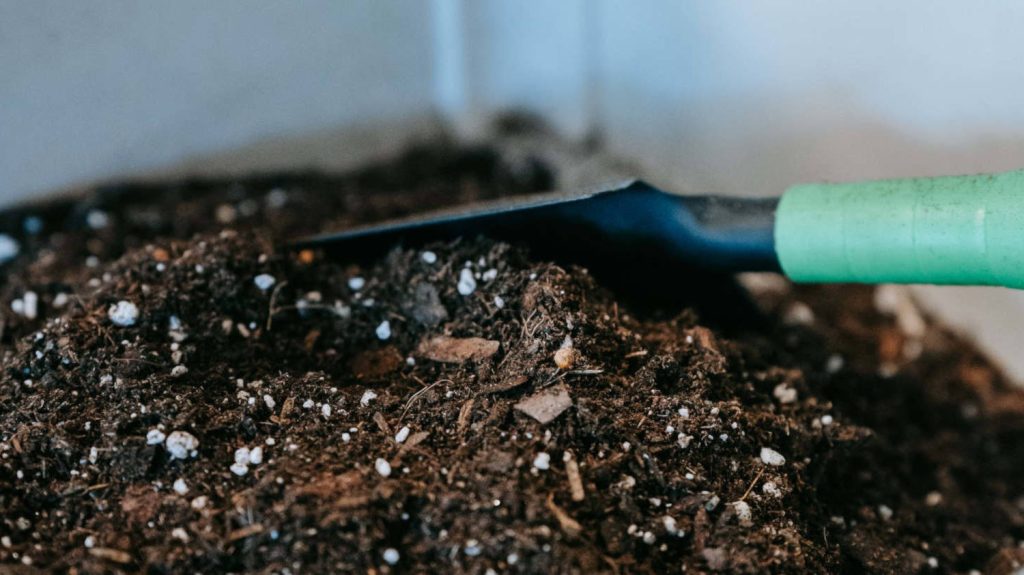
Succulents don’t need much fertilizer. Too much can actually harm them.
Feed your plants during their growing season, usually spring and summer. Use a low-nitrogen, diluted water-soluble fertilizer made specifically for succulents.
Dilute the fertilizer to half-strength. For most succulents, it is advisable to fertilize once a month during active growth for some varieties, while others may only need fertilization once a year. Always consider the specific needs of the succulent species and environmental conditions.
Stop fertilizing in fall and winter when growth slows down. Your plants are resting and don’t need the extra food.
If your succulents look healthy, you might not need to fertilize at all. Many thrive on neglect!
pH Balance and Soil Health
Succulents like slightly acidic to neutral soil. Aim for a pH between 6.0 and 7.0.
You can test your soil’s pH with a home testing kit. They’re cheap and easy to use.
If your soil is too alkaline, add some peat moss or sulfur. For soil that’s too acidic, mix in some lime.
Good drainage is key for soil health. Add perlite or coarse sand to your potting mix to improve drainage.
A bit of organic matter helps feed your plants slowly over time. Try adding some compost or worm castings to your soil mix.
Remember, healthy soil means healthy plants. With the right balance, your succulents will thrive indoors.
Caring for Different Succulent Types
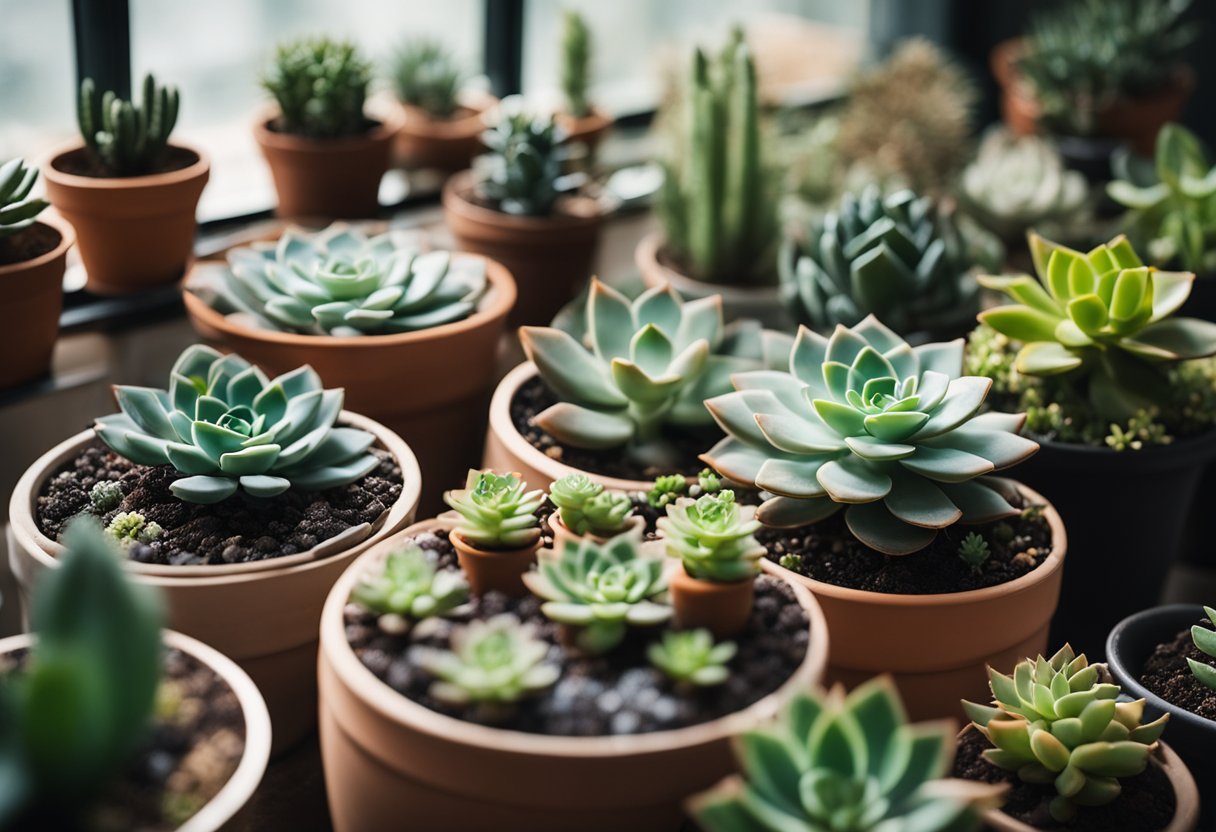
Different succulents need different care. Knowing what your plant likes helps it grow better. Here are some tips for common types and pests.
Special Considerations for Various Species
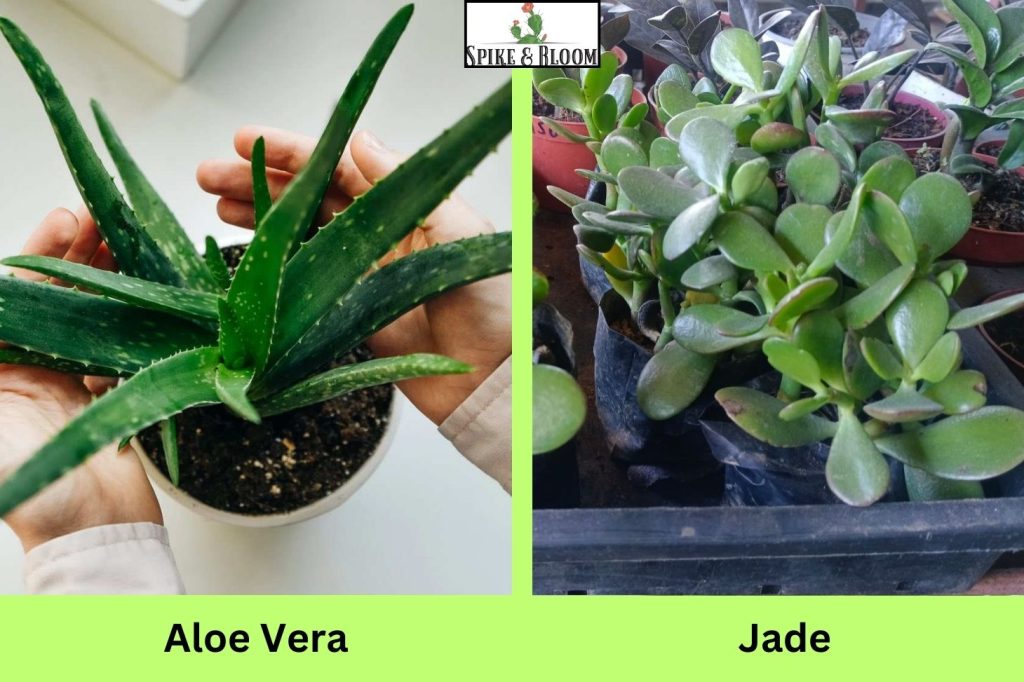
Aloe plants like bright light and can tolerate some direct sunlight. Water them when the soil dries out. Echeveria need lots of light. They can get stretched out if they don’t get enough. Water them sparingly.
Jade plants are tough succulents that can tolerate slightly more water than some other succulents, but they still thrive best when the soil dries out between waterings. Crassula plants are similar. Both like bright light.
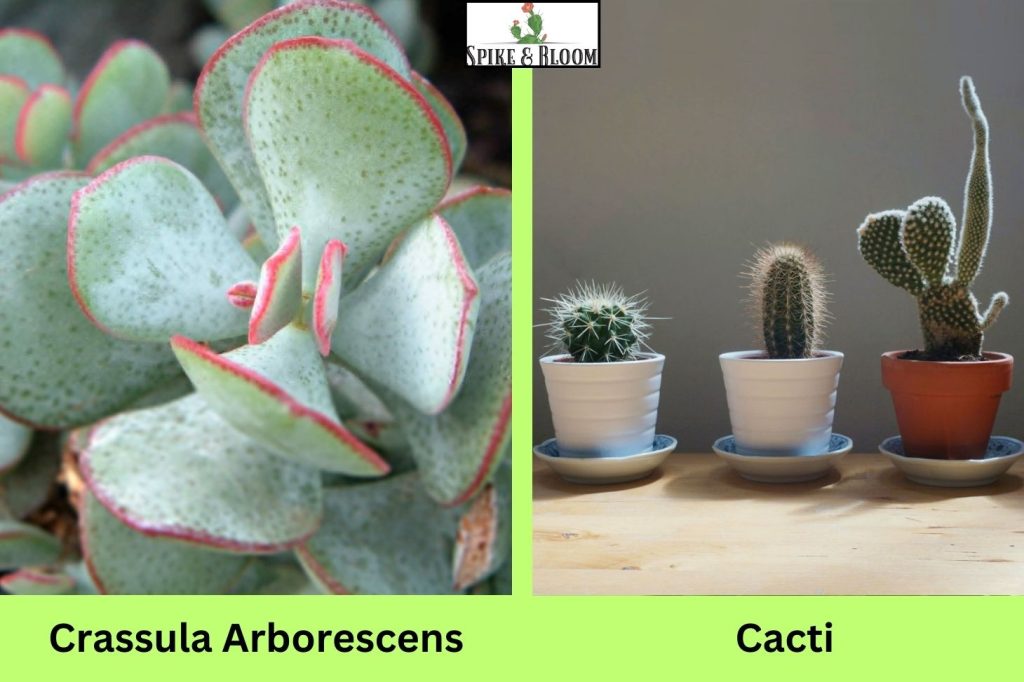
Cacti are adapted to arid environments and require less frequent watering than many other plants. Give them the sunniest spot you have. Use cactus soil that drains fast.
For most succulents, it’s best to use pots with drainage holes to ensure proper drainage and prevent root rot. This stops root rot. Mix some sand or perlite into regular potting soil. This helps water drain better.
Identifying and Dealing with Pests
Spider mites are tiny bugs that make webs on your plants. They like dry air. Mist your plants to keep them away.
Mealybugs look like white cotton. They suck sap from plants. Wipe them off with rubbing alcohol on a cotton swab.
Scale insects are hard to spot. They look like bumps on stems. Scrape them off gently with your fingernail.
To prevent pests, check your plants often. Keep them clean and don’t overwater. If you see bugs, move that plant away from others. You can use neem oil spray as a natural pesticide. It’s safe for most succulents.
Additional Tips for Indoor Succulent Success
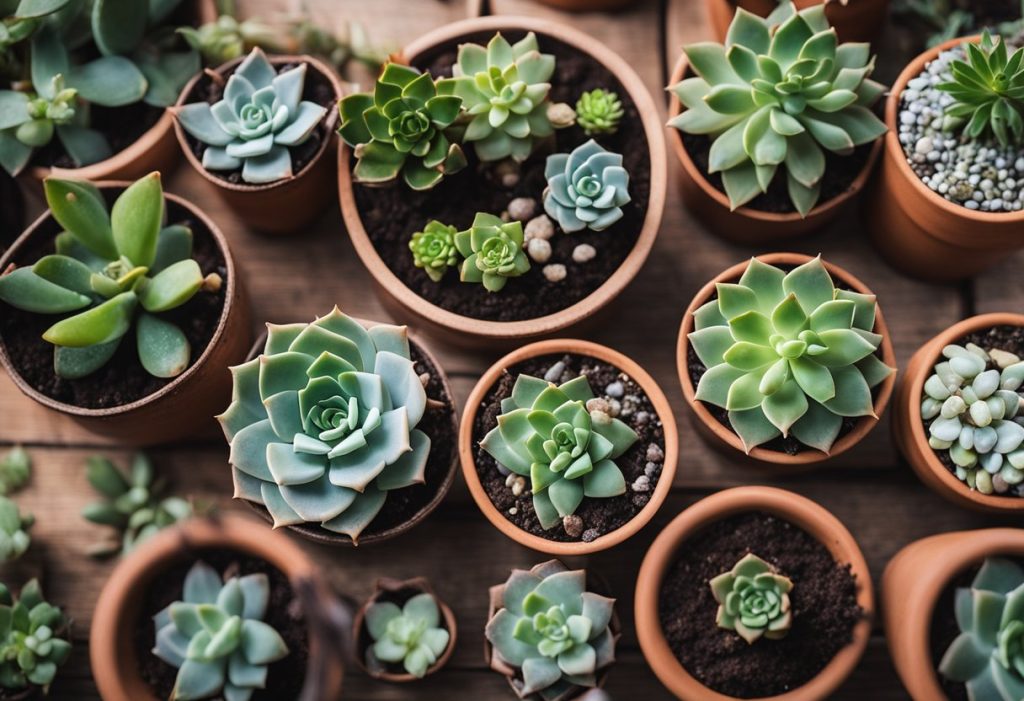
Proper containers and placement are key for happy indoor succulents. Regular care and repotting will keep your plants thriving long-term.
Appropriate Containers and Placement
Pick pots that fit your succulents well. Too big, and they’ll look tiny and sad. Small pots work best. Make sure they have drainage holes to let extra water out.
Put your plants where they’ll get lots of light. A sunny windowsill is perfect. If you don’t have enough natural light, use grow lights to help them out.
Rotate your pots every few weeks. This helps all sides of the plant get equal light. Your succulents will grow more evenly this way.
Avoid cold drafts from windows or air vents. Succulents like it warm and steady.
Long-Term Maintenance and Repotting
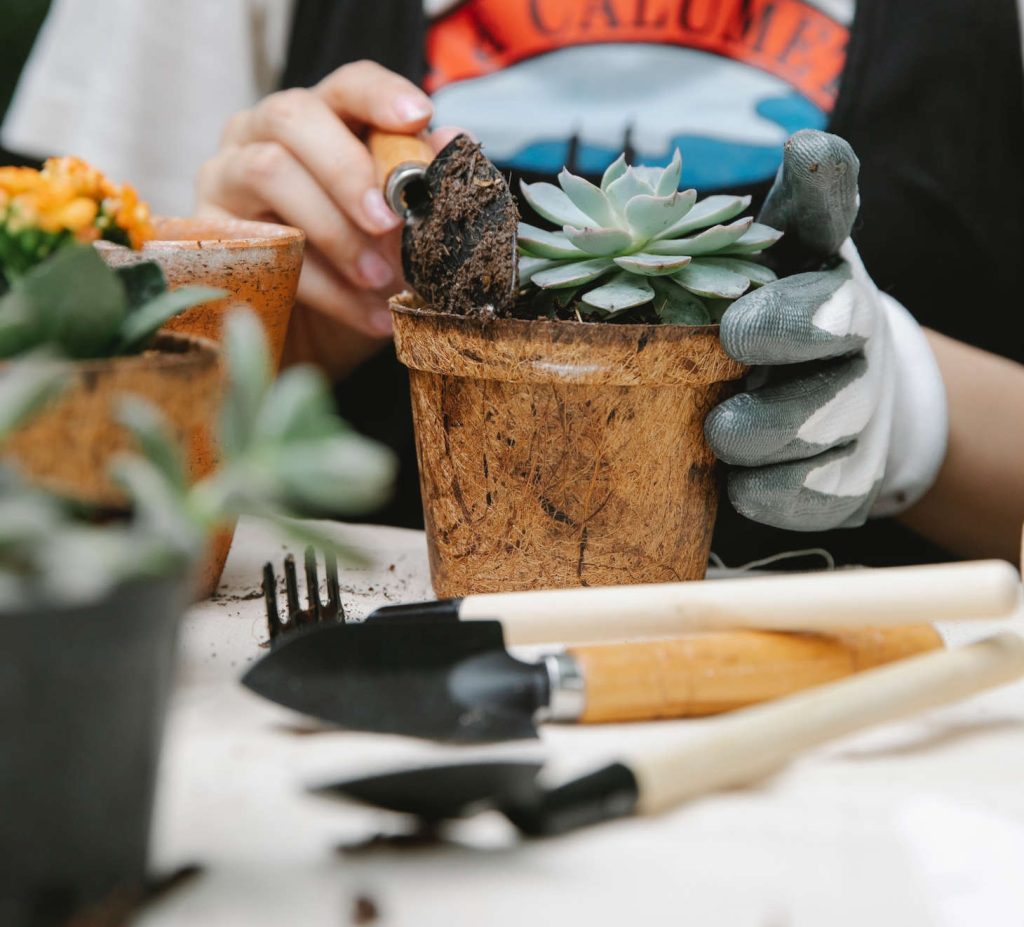
Check your plants often for signs of trouble. Look for:
- Soft, mushy leaves (overwatering)
- Shriveled leaves (underwatering)
- Pale, stretched-out growth (not enough light)
Prune dead or damaged leaves to keep your plants neat. Use clean, sharp scissors to avoid hurting the plant.
Repot your succulents every 2-3 years. This gives them fresh soil and room to grow. Spring is the best time for this job.
When repotting:
- Choose a pot 1-2 inches bigger than the old one
- Use fresh, well-draining soil mix
- Be gentle with the roots
- Don’t water right away, wait a few days to let any damaged roots heal
With these tips, your indoor succulents will stay happy and healthy for years to come!
Frequently Asked Questions
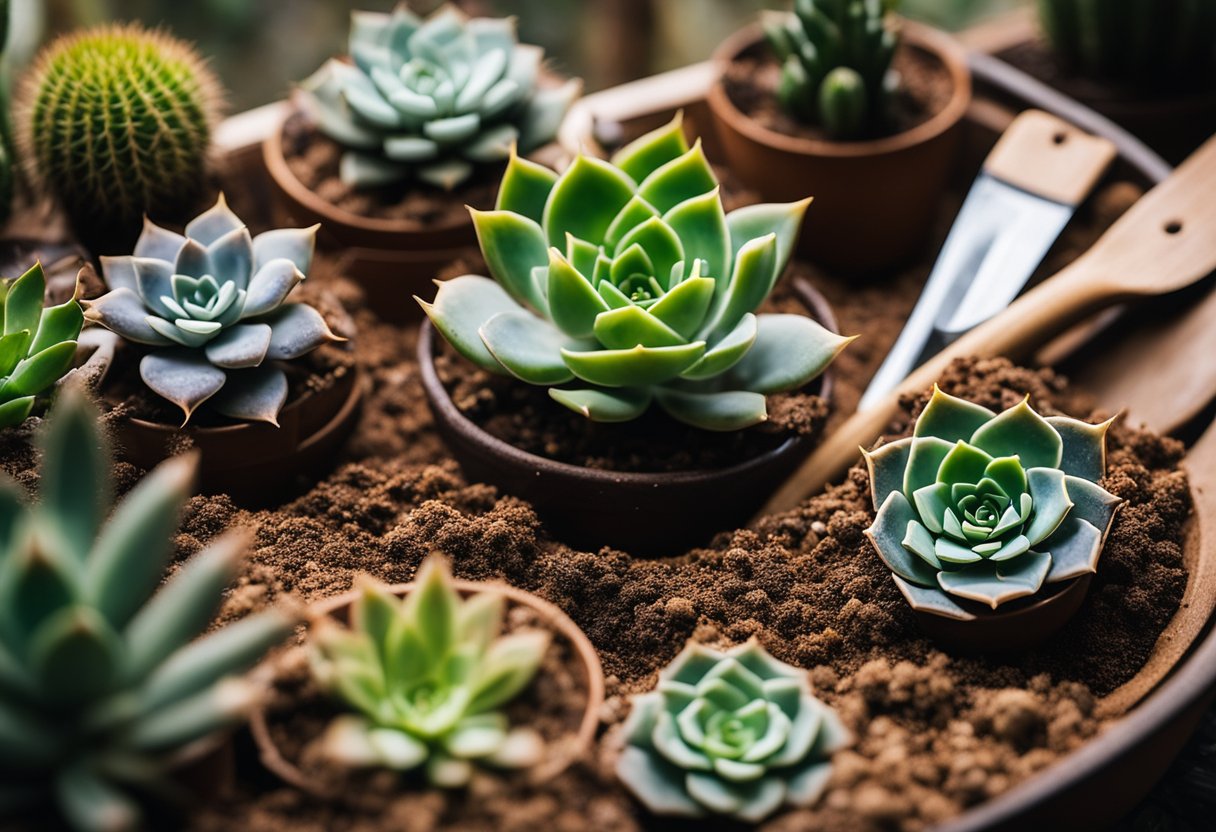
Picking the right soil for indoor succulents can be tricky. Here are some common questions to help you choose the best mix for your plants.
What’s a good succulent soil recipe for indoor plants?
A good mix for indoor succulents is 3 parts potting soil, 2 parts coarse sand, and 1 part perlite. This combo gives your plants the drainage they need. You can also add a bit of compost for extra nutrients.
How do I mix my own succulent soil for container gardening?
Start with regular potting soil as a base. Add perlite or pumice for better drainage. Mix in some coarse sand to help water flow through. Blend it all together until it’s even. Your succulents will love this custom mix!
What should I avoid when choosing soil for my indoor succulents?
Stay away from heavy, clay-like soils. They hold too much water and can rot your plants’ roots. Don’t use garden soil either – it’s too dense. Skip any mixes with lots of peat moss, as they can get too soggy.
Can I just use regular potting mix for my indoor succulents, or nah?
Regular potting mix alone isn’t the best choice. It holds too much water for succulents. If you must use it, mix in some perlite or sand to improve drainage. Your plants will be happier with a custom blend.
Is there a special soil mix for succulents that stay indoors all the time?
Yes! Look for mixes labeled for cacti and succulents. These are designed for the fast drainage these plants need. However, many commercial mixes don’t drain well enough. Our special blend is designed for perfect drainage, so your succulents get the right amount of moisture.
What makes a soil mix great for those cute indoor succulent buddies?
Great succulent soil drains quickly and doesn’t stay wet. It has big particles that let air reach the roots. The mix should be a bit gritty, not smooth like cake batter. Good soil helps your succulents grow strong and healthy.

